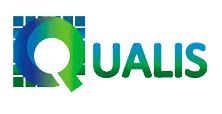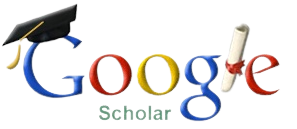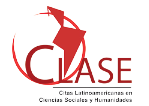From data silos to web of data
DOI:
https://doi.org/10.5433/1981-8920.2021v26n2p625Keywords:
Catalog, Semantic web, Linked data, Data silosAbstract
Objective: to show how catalogs are currently opaque, without semantic elements, and how they can be enriched with datasets present on the Web so that they become semantic and provide other possibilities of discovery.Methodology: the conceptual analysis technique was used, seeking to verify from studies how much the catalog is in fact a data silo and how this situation can be changed through linked data.
Results: through examples of bibliographic records, it was possible to include relationships between the data present in the catalog, providing context to patrons and enriching the information retrieved from the catalog.
Conclusions: library catalogs can be trusted sources of data and contribute to the Web of data, in addition to providing patrons with more possibilities of discoveries.
Downloads
References
BERMÈS, E. Enabling your catalogue for the semantic web. In: CHAMBERS, S. Catalogue 2.0: the future of library catalogue. Chicago: Neal-Schuman, 2013. p. 117-142.
BERNERS-LEE, T.; HENDLER, J.; LASSILA, O. The semantic web. Scientific American, New York, p. 24-30, may 2001. Disponível em: https://www.scientificamerican.com/article/the-semantic-web/. Acesso em: 27 jul. 2016.
BOJARS, U.; ZOGLA, A.; EGLÏTE, E. Linking library data for quality improvement and data enrichment. In: INTERNATIONAL CONFERENCE ON DATA MANAGEMENT TECHNOLOGIES AND APPLICATIONS, 4., Colmar, France, 2015. Proceedings […]. Colmar: INSTICC, 2015. p. 184-188, 2015.
BYRNE, G.; GODDARD, L. The strongest link: libraries and linked data. D-Lib Magazine, v. 16, n. 11, p. 1-9, 12, nov./dez. 2010. Disponível em: http://www.dlib.org/dlib/november10/byrne/11byrne.html. Acesso em 19 nov. 2018.
COLE, T. W. Library MARC records into linked open data: challenges and opportunities. Journal of Library Metadata, v. 13, p. 163-196, 2013.
COYLE, K. Library data in the Web world. Library Technology Reports, Chicago, p.5-11, feb./mar. 2010.
DENAUX, R. et al. Knowledge architecture for organizations. In: PAN, J. Z. Exploiting linked data and knowledge graphs in large organizations. Cham: Springer, 2017. p. 57- 94. Disponível em: http://dx.doi.org/10.1007/978-3-319-45654-6. Acesso em: 05 nov. 2018.
DEWEESE, K. P.; SEGAL, D. Libraries and the semantic web. Williston: Morgan & Claypool, 2014.
FURNER, J. Conceptual analysis: a method for understanding information as evidence, and evidence as information. Archival Science, v. 4, p. 233-265, 2004.
HYLAND, B. Preparing for linked data enterprise. In: WOOD, D. Linking enterprise data. New York: Springer, 2010. p. 51-64.
MACEWAN, A. Project InterParty: from library authority files to e-commerce. Cataloging & Classification Quarterly, v. 39, n. 1-2, p. 429-442, 2004.
MALMSTEN, M. Exposing library data as linked data. IFLA, 2009. Disponível em: http://wtlab.um.ac.ir/images/elibrary/linked_data/other/Exposing%20Library%20Data%20as%20Linked%20D ata.pdf. Acesso em 15 nov. 2018.
PROGRAM FOR COOPERATIVE CATALOGING. Formulating and obtaining URIs: a guide to commonly used vocabularies and reference sources, 14 Feb.2018. Disponível em: https://www.loc.gov/aba/pcc/bibframe/TaskGroups/formulate_obtain_URI_guide.pdf. Acesso em: 21 nov. 2018.
SHIEH, J.; REESE, T. The importance of identifiers in the new Web environment and using the Uniform Resource Identifier (URI) in subfield zero ($0): a small step that is actually a big step. Journal of Library Metadata, v.15, p. 208-226, 2015.
SINGER, R. Linked library data now! Journal of Electronic Resources Librarianship, v. 21, p. 114-126, 2009. Disponível em: https://www.tandfonline.com/doi/pdf/10.1080/19411260903035809?needAccess=true. Acesso em: 14 dez. 2018
WORLD WIDE WEB CONSORTIUM. RDF Primer. Cambridge, 2014. Disponível em: https://www.w3.org/TR/2014/NOTE-rdf11-primer-20140624/.Acesso em: 22 out. 2018.
WORLD WIDE WEB INCUBATOR GROUP REPORT. Library Linked Data Incubator Group final report, 25 out. 2011. Disponível em: https://www.w3.org/2005/Incubator/lld/XGR-lld-20111025/. Acesso em: 14 nov. 2018.
WU, H.Undestanding knowledge graphs. In: Pan, J. Z. Exploiting linked data and knowledge graphs in large organizations. Cham: Springer, 2017. p. 147-180. Disponível em: http://dx.doi.org/10.1007/978-3-319-45654-6. Acesso em: 30 out. 2018.
Downloads
Published
How to Cite
Issue
Section
License
A revista se reserva o direito de efetuar, nos originais, alterações de ordem normativa, ortográfica e gramatical, com vistas a manter o padrão culto da língua e a credibilidade do veículo. Respeitará, no entanto, o estilo de escrever dos autores. Alterações, correções ou sugestões de ordem conceitual serão encaminhadas aos autores, quando necessário.
O conteúdo dos textos e a citação e uso de imagens submetidas são de inteira responsabilidade dos autores.
Em todas as citações posteriores, deverá ser consignada a fonte original de publicação, no caso a Informação & Informação.











